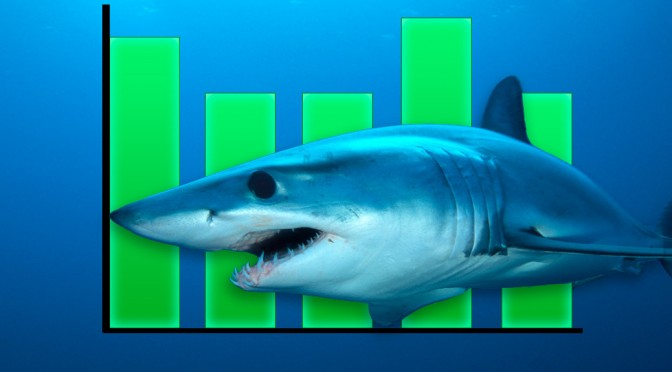KPIs are one of the most misunderstood terms in the world of business as well as in sports. It stands for Key Performance Indicator.
Key – as in something important, something vital.
Performance – as in the action/process of performing a buycbdproducts task.
Indicator – as in indication, a hint of something.
So it’s an indication on how well you are performing something. But what about the Key thing? The important stuff? Is the KPI an important indicator or an indicator of something important?
Important indicators or indicators of important stuff?
You see, we can measure anything and call it a KPI. That doesn’t means it is a KPI. It’s just lipstick on a pig.
There are loads of important things in a company or on a rugby or football pitch that can be measured. If you do, you’ll get indications of important stuff. That doesn’t mean that those metrics are the game changing indicators, the information that leads to better decision-making, your best KPIs.
But if you instead measure activity or processes to get important indicators, those which may help you make better decisions, then you’re on the right track. You’re using KPIs.
KPI – a dangerous creature?
If KPIs were animals the would most likely be sharks. Beautiful, strong, necessary for the ecology in the ocean, but often misunderstood and extremely dangerous if pushed or mistreated.
A good KPI can be beautiful (in a somewhat nerdy way), it’s definitely a strong helper in getting better results, I would argue it’s necessary to have them in one way or another to make really good decisions and, yes – they are misunderstood and potentially dangerous for your company’s or team’s desired results if you treat them the wrong way or measure the wrong things, like if you only get indicators of important stuff.
In the excellent article “Can players game the system?” from thevideoanalyst.com you can read about what happened when Clive Woodward introduced heart rate monitors to the England Rugby team. As soon as they saw their heart rates they wanted their numbers to go up. Not because they actually wanted their hearts to beat faster, but just to raise the numbers. It’s a trigger of competition to show numbers, any kind of numbers, to competitive people. And if you don’t think about why you measure something and how to use and present that data, dangerous things can happen. Like players doing unnecessary sprints, wasting their energy and power, just to get their numbers up. That wasn’t really what Clive had in mind…
So make sure to measure the right things!
How do I know what to measure?
A KPI is a – leading or lagging – qualitative or a quantitative measure of how well you are performing against your critical success factors.
In other words, it’s a measure of how well you are doing what you know will lead you to success. So now you just have to find out what leads you to success!
Assuming you have clearly defined, measurable, goals based on your vision and purpose you can then write down your critical success factors for reaching those goals.
Think of:
What must be in place for you to be able to reach your goals?
What are the key things you have to do to make sure you reach your goals?
Those things are your critical success factors! KPIs are the measurement on these factors. Let me show you an example:
The goal
You want to go from where you currently are to the city of Smallville and be there by 21:00 today.
A pretty simple goal which is easy to measure if you have reached or not, right? Either you are there at 21:00, or you’re not.
The process
You know your process:
- Plan (calculations of which road to take, which vehicle to use, how far it is to Smallville from where you are, check speed limits, when to start your journey)
- Travel
- Evaluation (check time of arrival to see if you’ve met your goal)
The success factors
Your critical success factors are:
- Regular calculation of where I am and the remaining way to travel
- Knowing my speed
- Knowing the remaining time until 21:00
- Choosing the right road for the task
- Choosing the right vehicle for the task
- Having enough fuel for the task
- Avoid unnecessary stops (like being stopped by the police while driving because of speeding)
I’m sure there are more of them, but for this example… well, you get the picture.
The KPIs
By measuring my success factors (current speed, current time, remaining way to go, fuel consumption…) I get my KPIs:
- Necessary average speed to reach goal by 21:00 = X km/h (or mph)
- Remaining amount of fuel vs estimated amount of fuel necessary to reach goal by 21:00 = Y %
The frequency
I also need to set:
- Frequency of recalculation of KPIs = Z times/hour
Using the KPIs
I then check, with the frequency of Z times/hour, if my current speed is the same as X and if I have enough fuel (Y%) for the remaining way to go.
If I don’t check this often enough, I might be in for a surprise. If I only check it once, I might end up in the situation that I find that I either reached my goal or I didn’t. I must check it more often. If I check it too often – like two times per minute – I might be too busy calculating to get any actual driving done. (or I take the wrong turn somewhere!)
So the right frequency is VERY important.
Action
By following my process and I’m checking my KPIs with the right frequency, I can be comfortable that I will reach my goal on time.
If the KPIs show that I, under the current circumstances, might not reach my goal on time, I can make the necessary decisions and take action before the damage is done. I might have to change route, vehicle or something else to improve on my KPIs, meaning I will get to my goal on time.
The KPIs are my important indicators of how well I’m performing what I know will bring me to my goal – my success factors.
Lagging and leading
KPIs can be either lagging or leading. Let me explain:
Lagging
A lagging KPI in a store could be: Amount ($) sold during Q3?. It can only be measured after Q3 has ended and you can’t do anything to improve this KPI during this Q3. You can only improve on it the next time around.
It’s reactive and has a low frequency.
Leading
Leading KPIs in the same store could be:
For instance you might have to measure number of customers/day and spent amount/customer to predict sales for Q3 and give you the opportunity to affect these KPIs to improve on the result for Q3.
It’s proactive and has a high frequency.
But what happens if the frequency of a leading KPI is too low?
It becomes lagging! Make sure to avoid that.
Energy and learning
KPIs should be simple to understand so the can give you energy and help you focus on reaching your goals. They should also assist learning and the discussion of “Why did this event affect the KPIs in this was?” or “Which of these tasks might affect the KPIs the most in a positive direction? Which should we prioritize?”
Too complicated or uninspiring KPIs will soon be forgotten because none cares about them and then they’re to no use at all. So keep it simple!
And when you’ve had your KPIs around for a while, try to exchange them for fresh ones, even if they’re connected to the same success factors as the ones you currently have. Old KPIs lose their ability to give energy, so a new one once in a while could be a simple way of boosting your organization.
The purpose of a KPI
So to sum this up – the purpose of a KPI is to help you, in an easy way, to make better decisions, to make sure you reach your goals!

